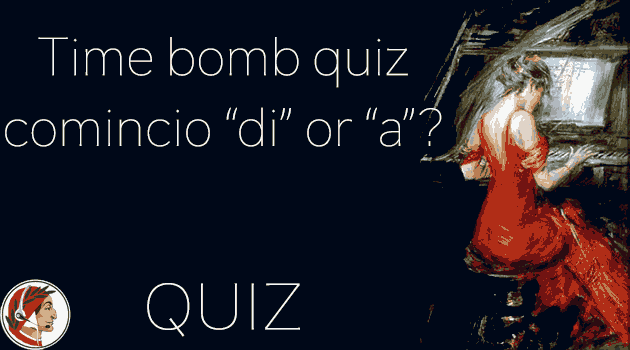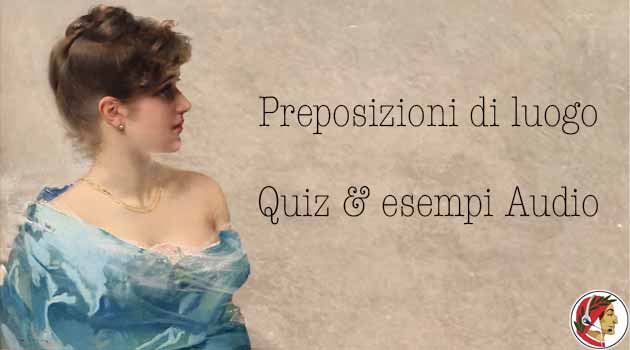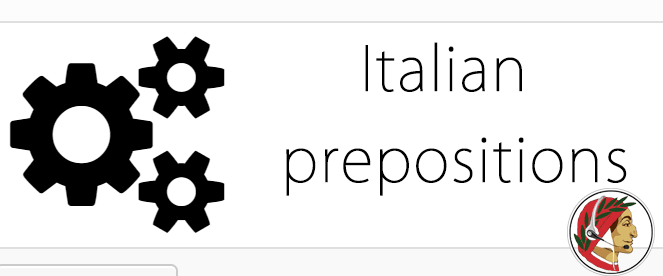Time to practice Italian verbs followed by “di” and “a”. Countdown quiz – 20 minutes
- Ho cominciato a leggere un libro.
- Ho finito di leggere un libro.
These two examples show how some verbs (e.g. cominciare & finire) can connect with a second infinitive verb (leggere, in this case) with the prepositions A or DI. There’s no strict rule about the choice, you will need to learn every single situation.
If you are not familiar with this topic please read these two blogs.
You have 20 minutes to try the quiz. Cominciamo?
Quiz-summary
0 of 2 questions completed
Questions:
- 1
- 2
Information
LOADING QUIZ...
You have already completed the quiz before. Hence you can not start it again.
Quiz is loading...
You must sign in or sign up to start the quiz.
You have to finish following quiz, to start this quiz:
Results
Time has elapsed
Your score is 0 out of 0 points, (0)
| Average score |
|
| Your score |
|
Categories
- Not categorized 0%
-
Try an Italian Class on Skype
Individual, live, with a native teacher, 55 minutes long.
[process_steps type="horizontal" size="small"] [process_step title="Give us date and time" icon_image="21212"] Tell us when you are free, we'll check our availability. [/process_step] [process_step title="Check your inbox" icon_image="20577"] We'll get back to you with a confirmation and details. [/process_step] [process_step title="See you on Skype" icon_image="20586"] That's it. See you in class. [/process_step] [/process_steps]
- 1
- 2
- Answered
- Review
-
Question 1 of 2
1. Question

Countdown Quiz
comincio "di" or "a"..?
You have 20 minutes to solve this set of questions
Check your score and statistics at the end of the quiz.
Level: not that easy...
-
- Mi hanno costretto (a) chiedere le dimissioni.
- Laura è convinta (di) essere la più bella della classe.
- Sono abituato (a) lavorare di domenica e (a) non lamentarmi.
- Alcuni miei colleghi mi hanno convinto (a) partecipare alla maratona.
- Per fortuna mio fratello si è offerto (di) aiutarci (a) fare il trasloco.
- Mio marito mi ha promesso (di) mangiare meno carboidrati e (di) mettersi a dieta.
- Tua madre ha provato (a) spiegarti che dovresti riprendere (a) studiare.
- Avevo dimenticato (di) spegnere il gas sono corso a casa (a) controllare.
- Nessuno gli aveva chiesto (di) venire alla nostra festa, ma lui non ha esitato (a) presentarsi ugualmente alla porta di casa nostra.
Correct
- Chech the right answers and errors. Go to the next question.
↓↓↓
Incorrect
- Chech the right answers and errors. Go to the next question.
↓↓↓
-
-
Question 2 of 2
2. Question
Select the correct sentences
Correct
- Che ne pensi di andare al mercato insieme? Ci sono molte cose da vedere.
- Mio padre ha ricominciato a fumare. Aveva cercato di smettere ma non ci è riuscito.
- Hai mai pensato di diventare un cuoco professionista? Forse potresti frequentare
auna scuola di cucina e imparare a cucinare piatti sofisticati. - Devo sempre convincere mio figlio a svegliarsi presto. E' un gran dormiglione!
☑ La tua selezione. Controlla il tuo punteggio finale.↓↓↓
Incorrect
- Che ne pensi di andare al mercato insieme? Ci sono molte cose da vedere.
- Mio padre ha ricominciato a fumare. Aveva cercato di smettere ma non ci è riuscito.
- Hai mai pensato di diventare un cuoco professionista? Forse potresti frequentare
auna scuola di cucina e imparare a cucinare piatti sofisticati. - Devo sempre convincere mio figlio a svegliarsi presto. E' un gran dormiglione!
☑ La tua selezione. Controlla il tuo punteggio finale.↓↓↓




